Precautions for Using Inflatable Slides
Inflatable slides provide an exciting and enjoyable experience for both children and adults. These big, colorful constructions are popular at parties, parks, and leisure activities. However, guaranteeing their safety while in use is critical. By taking appropriate measures, you may reduce hazards and have fun without stress. This page provides extensive rules for the safe usage of inflatable slides.
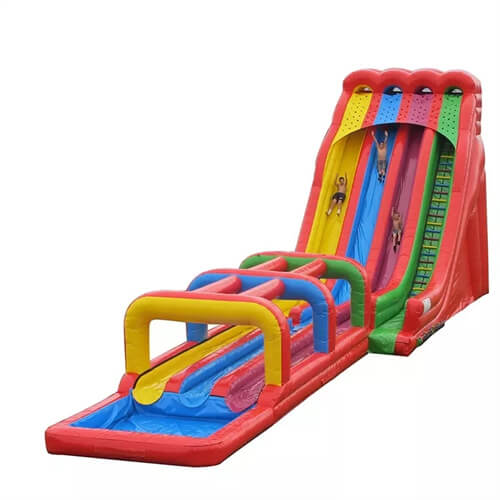
Site Selection and Setup
The first step in ensuring safety is careful site selection. Always place inflatable slides on a level, solid surface. Uneven ground might cause the slide to tilt or collapse, posing an increased risk of disaster. Grass, concrete, or packed dirt are all ideal surfaces, as long as they are devoid of sharp things such as pebbles or garbage.
Secure the inflatable slide with poles or sandbags. Stakes are good for outdoor setups, whilst sandbags are suitable for inside or hard-surface installations. Even when actively used, a tightly fastened slide limits movement. To ensure optimal stability, make sure the anchoring system follows the manufacturer’s requirements.
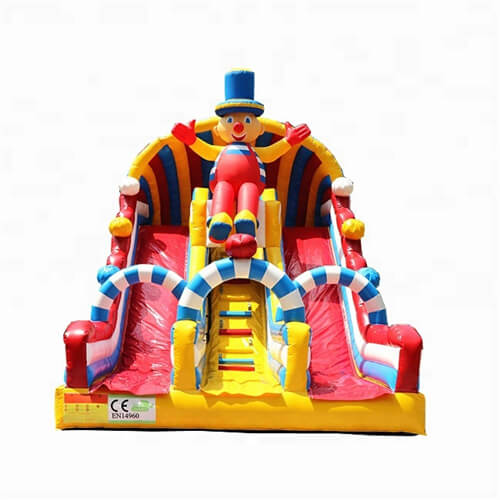
Inspection Before Use
Before permitting anyone to use the inflatable slide, perform a complete examination. Look for any noticeable rips, holes, or weak seams in the cloth. Even minor defects might worsen under strain, resulting in structural failure. Check that the air blower is working properly and maintains constant inflation levels.
Also, examine the slide’s base and entry regions. These areas generally see the most wear and tear. Use patch kits provided by the manufacturer to repair any damages as soon as they occur. Never utilize an inflatable slide that is clearly worn or unstable.
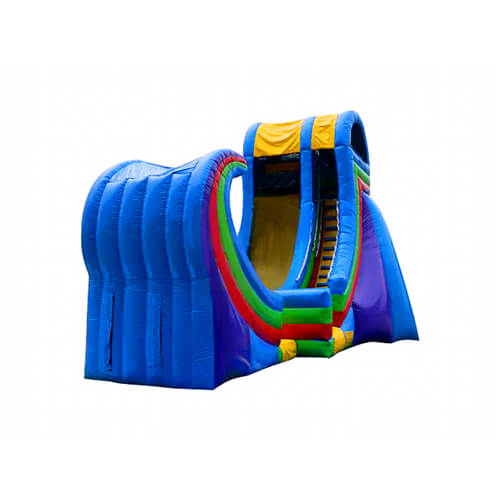
Weight and Age Restrictions
Inflatable slides are constructed with weight and age restrictions. Overloading the slide might put too much stress on the material, increasing the likelihood of rips or collapses. Always follow the manufacturer’s specifications for the maximum weight and number of users authorized at one time.
Young children should only utilize slides appropriate for their age group. Large slides designed for larger children or adults can be intimidating and dangerous for toddlers. Similarly, adults should avoid utilizing slides designed for children to avoid harm and injury.
Constant Supervision
Supervision is an essential component in ensuring safety. An adult should always supervise the slide while it is in use. Supervisors should enforce regulations, control congestion, and respond rapidly to any problems that develop. Without enough supervision, youngsters may engage in rough play, jump on one another, or utilize the slide wrongly.
If there are a large number of youngsters, set up a rotation system. This guarantees that everyone has a fair chance and prevents congestion. Overcrowding not only increases the likelihood of crashes, but it also puts undue strain on the inflatable structure.
Weather Considerations
Weather conditions have a considerable impact on the safe operation of inflatable slides. Avoid utilizing the slide in strong winds, rain, or severe temperatures. Wind can collapse the structure, while rain makes the surface slick and dangerous. In warmer weather, the slide’s material may become too hot to touch, resulting in burns.
If the weather changes unexpectedly, deflate the slide quickly. Never leave an inflatable slide alone in unfavorable circumstances, since it may be dangerous even when not in use.
Proper Usage Guidelines
Ensure that all users understand how to properly utilize the inflatable slide. Slide feet first, and avoid springing or flipping at the top. Enforce a no-shoes policy to protect the slide and other users. Before sliding, make sure to remove any sharp items, such as keys or jewelry.
Encourage users to wait until the preceding person has cleared the landing area before sliding. This avoids collisions and maintains a steady flow of activities. Remind youngsters not to climb the slide’s walls or sides, since this might cause falls and structural damage.
Maintenance and Cleaning
Inflatable slides require regular maintenance to ensure their lifespan and safety. After each usage, thoroughly clean the slide to eliminate dirt, debris, and moisture. A clean surface lowers the chance of sliding and increases the material’s longevity. Clean the slide with mild soap and water, and make sure it is thoroughly dry before storing it.
Store the inflatable slide in a cool, dry location away from direct sunlight. Prolonged exposure to sunlight can damage and fade the material’s hues. Additionally, review the slide on a regular basis, even when it is in storage, to resolve any possible concerns.
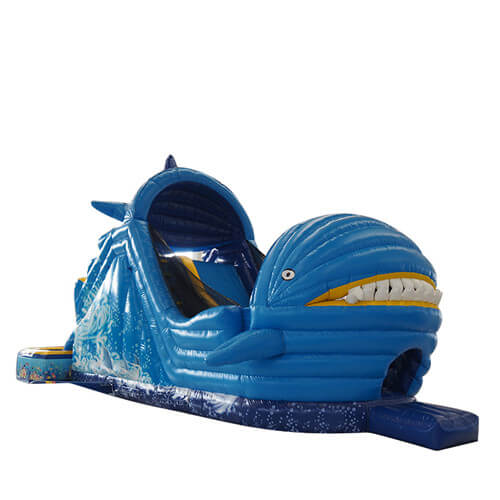
Emergency Preparedness
Accidents can occur despite safeguards, so being prepared is essential. When utilizing an inflatable slide, have a first-aid kit accessible. Minor scrapes and bumps may be treated quickly, decreasing the severity of the injury. Ensure that supervisors understand basic first-aid and emergency protocols.
In the event of a serious emergency, such as a collapse or injury, deflate the slide quickly and evacuate all users. Contact emergency services if necessary. A clear emergency plan provides a timely and successful reaction.
Rental and Purchase Considerations
If you’re renting or purchasing an inflatable slide, choose a reputable supplier. Reputable companies provide high-quality slides that meet safety standards. They also offer detailed instructions for setup, usage, and maintenance. Avoid using slides from unverified sources, as they may not meet safety requirements.
When renting, inspect the slide upon delivery to ensure it’s in good condition. Request guidance from the rental company if you’re unfamiliar with setup procedures. For purchased slides, retain the user manual and warranty information for future reference.
Educating Users
Educating users, particularly children, is essential for safe play. Before allowing access to the slide, explain the rules clearly. Use simple language and demonstrate proper sliding techniques if necessary. Reinforce the importance of following the rules to avoid accidents.
Post visible safety guidelines near the inflatable slide. These signs serve as reminders for users and help supervisors enforce rules effectively. Clear communication creates a safer environment for everyone.
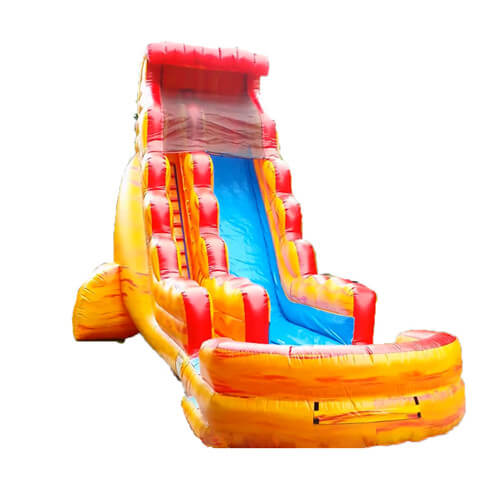
Special Considerations for Water Slides
Because there is water on inflatable water slides, extra measures must be taken. Make sure the water supply is clean and at a safe temperature. Avoid overfilling pools or splash zones, since this might result in sliding dangers surrounding the slide.
Children should be properly supervised when utilizing water slides, as drowning dangers exist even in shallow water. To lessen the risk of sliding, use nonslip mats around the entry and departure locations. Additionally, check for leaks or weak seams on a frequent basis, since water pressure can compound damage.
Conclusion
Inflatable slides provide fun and excitement to parties, but safety should always come first. You may assure a safe experience for everyone by choosing an appropriate location, examining the slide, following instructions, and overseeing use. Weather concerns, maintenance, and emergency readiness all improve safety measures.
Whether you rent or purchase an inflatable slide, make quality and safety a top priority. Educate users and enforce regulations to foster an enjoyable, accident-free environment. Following these steps ensures that inflatable slides remain a fascinating and safe sport for people of all ages.
